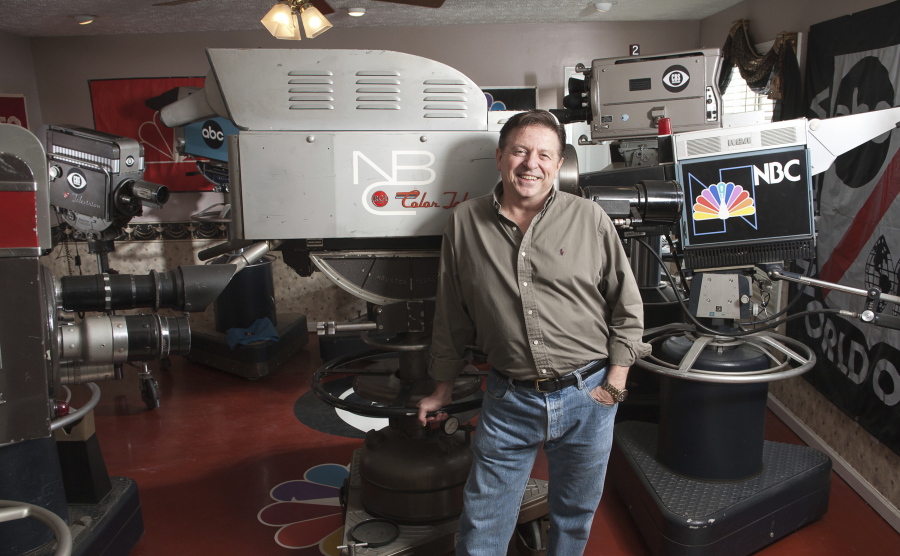WINDER, Ga. — What does Bobby Ellerbee see when he looks at his antique TV cameras? He sees a bit of what they’ve seen since the birth of television.
His cameras are now dormant, decommissioned from performing any on-air service. But those 15 cameras arranged in, fittingly, his family room in Winder, Ga., have been cosmetically restored to mint condition and they teem with history.
Here’s his RCA model TK-10, his oldest, which hails from 1946. It is trimmed with a jaunty red stripe and name plates designating its long-ago owner: Chicago station WGN-TV.
“It’s one of the original eight cameras they bought when they put the station on the air,” Ellerbee says.




